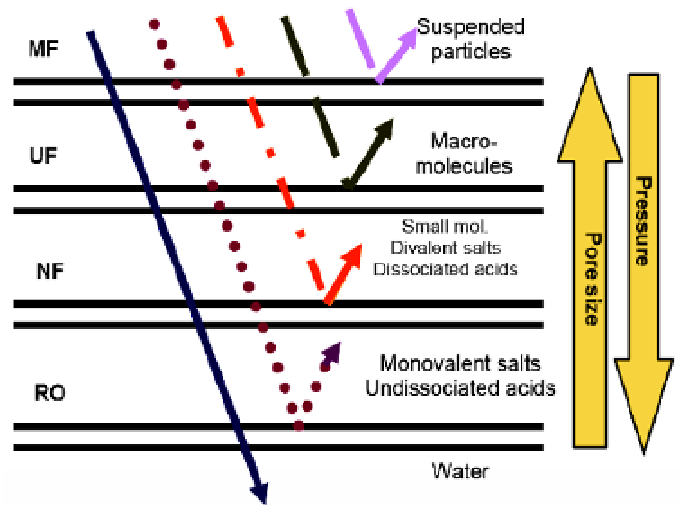Biomedical Engineering Reference
In-Depth Information
Membrane processes have wide industrial applications covering many existing and
emerging uses in the chemical, petrochemical environmental, water treatment,
pharmaceutical, medical, food, dairy, beverage, paper, textile and electronic industries (Ho
and Sirkar, 1992). Membrane filtration process is an approach to separate different materials
by semi-permeable membranes. Generally, a membrane process requires two bulk phases to
be physically separated by a third phase or a membrane phase. The membrane is an interphase
between the two bulk phases. The membrane phase may be any or a combination of the
following: nonporous solid, microporous or macroporous solid with a fluid (liquid or gas) in
the pores, a liquid phase with or without a second phase, or a gel (Ho and Sirkar, 1992). In all
membrane processes, the feed is separated into two fractions, i.e. a permeate which passes
through the membrane and a retentate which is rejected by the membrane. Large commercial
scaled uses of membrane processes have displaced conventional separation processes and
more expectation is supposed in the future. Membrane processes have always been an integral
part of biotechnological processes for fermentation, clarification, purification and
concentration. Over the last 30 years, the followings are the widely employed membrane
processes : reverse osmosis (RO), ultrafiltration (UF), microfiltration (MF), nanofiltration
(NF), dialysis (DA), electrodialysis (ED), gas permeation (GP), pervaporation (PV) and liquid
membrane. They are used to produce potable water from sea, to clean industrial effluent and
recover valuable constituents, to concentrate, purify or fractionate temperature-sensitive
solutions (food and drug industry, biotechnology), to remove urea and other toxins from the
blood stream in an artificial kidney, to release certain drugs at a predetermined rate
(controlled release), and so on (Madaeni, 1999).
In the case of food industry, pressure-driven membrane processes including
microfiltration, ultrafiltration, reverse osmosis and nanofiltration have been adopted for both
promotion of product and treatment of wastes. Pressure plays a role as driven force.
Figure 1. Classification of pressure- driven membrane processes.
Figure 1 and Table 1 summarized the characteristics of pressure-driven membrane processes.


